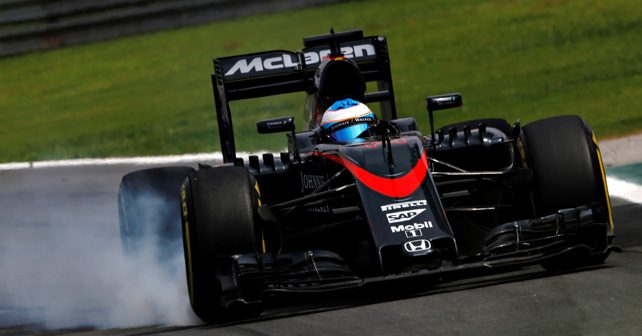Formula One furthering automotive technology as always
Joe feels that F1 is actually doing very well, thank you very much! It’s all the rage these days to talk about Formula 1 being in decline, and that

Joe feels that F1 is actually doing very well, thank you very much!
It’s all the rage these days to talk about Formula 1 being in decline, and that this is wrong or that is wrong. And, to be fair, some of these criticisms are true and they do need to be fixed. But the sport as a whole is still a roaring success, when one looks at it from the point of view of whether or not it gives a good return on investment – or ROI as the marketing folk would say. Yes, the sport is crazily expensive but, when you stop and think about it, no car manufacturer in the modern era is going to be go on paying for something that isn’t good value for money. The entire industry is based on cost-efficiency, and so one must assume that the sport does deliver.
The success of the sport was highlighted the other day by Mercedes AMG Petronas boss Toto Wolff, who says that the marketing impact is very carefully – and precisely – measured. “In the last season,” he said, “we generated $3 billion in advertising value, which means that this is the sum of money that we would have had to invest in TV and print advertising in order to achieve a similar result to our commitment in F1.” That is mightily impressive when you stop and think about it, particularly when you look at the team’s budget, which is around $500 million a year. That doesn’t mean that this is what F1 actually costs Mercedes, because that figure includes not only the money that Mercedes puts directly into the sport, but also the sponsorship revenues, the television money and all other revenues that come from the business – notably the fees for engine deals and, of course, merchandising. The recent figures that come from Ferrari, since the IPO, suggest that the Italian firm is actually making money from the F1 programme – while at the same time using the sport as its only real form of advertising. That’s brilliant! You’re having fun racing cars, you’re creating useful new technology for your road cars, you’re getting free publicity, and you’re making a profit doing it. How good is that?
When you look at the technology flowing out of F1 these days, you can’t help but be impressed. The automotive industry has spent more than 100 years trying to improve the thermal efficiency of its engines. Thermal efficiency is a measure of the amount of energy one uses based on the amount of energy one puts in – in the form of fuel. This percentage measure has crept slowly upwards for more than a century, but until recently was still only at around 35% for the very best engines that the industry had to offer. Or to put that another way, 65% of the energy in the fuel is still being wasted. Since F1 embarked on the development of the current generation of hybrid turbos with engine recovery systems, the thermal efficiency of these power units (one cannot say engine, because it’s more complicated than that) has risen dramatically. A top F1 engine man whispered to me the other day that his group is now closing on 50% efficiency – having passed 45% some time ago. That is a revolution in human mobility – and few people have made much of it. The series promoter has done nothing but complain that the cars are not noisy enough, while the international federation has had its head stuck firmly in the flowerbed. This is astonishing stuff if someone out there would bother to shout it from the rooftops. It means that if it’s adopted across the industry, the amount of fuel required to move X number of cars x number of miles will be less – which means that even if car production increases, the amount of fuel being used should reduce. And that means that the emissions will reduce as well.
And, to be quite honest, I really don’t understand why more car companies are not working out that F1 is exactly what they want. Yes, it would be nice to win, but even taking part in F1 would give a car company the sheen of being a high technology business with good green credentials. Yes, one does need to invest a chunk of money in order to get into the game, but the technology that is being developed in F1 is already spreading between the competitors – and in consequence it’ll be more readily available than it was a year or two ago. That means that newcomers can arrive at a decent level and be quickly up to speed if they hire the right people and buy the right machines.
The other thing that I completely fail to understand is why the car manufacturers who are in F1 are not using the same “platform engineering” strategies that exist throughout the car industry. If you invest in developing a new engine, you maximise its value by spreading it throughout your range and your brands. Today, if you buy a Bentley, you’ll get a car with a lot of VW parts in it. You don’t care, because the car feels good and the badge says Bentley. So why is Fiat Chrysler not using Ferrari technology to have Alfa Romeo, Maserati or even Chrysler engines in F1? And why is Volkswagen not involved? It has Audi, Porsche, Lamborghini and Bugatti, all great racing brands. It has the technology required, because the engines used by Porsche at Le Mans are not very different in terms of technology than the F1 engines of today. And, if you say it’s because VW is in trouble because of its diesel emissions scandal, I would reply: “Sure, but what is the fastest way to get new credibility in emissions technology? Surely, winning in F1 and pushing up the thermal efficiency of the engines has got to be the sensible way to go.”
Joe Saward has been covering Formula 1 full-time for 28 years. He has not missed a race since 1988.

























Write your Comment on